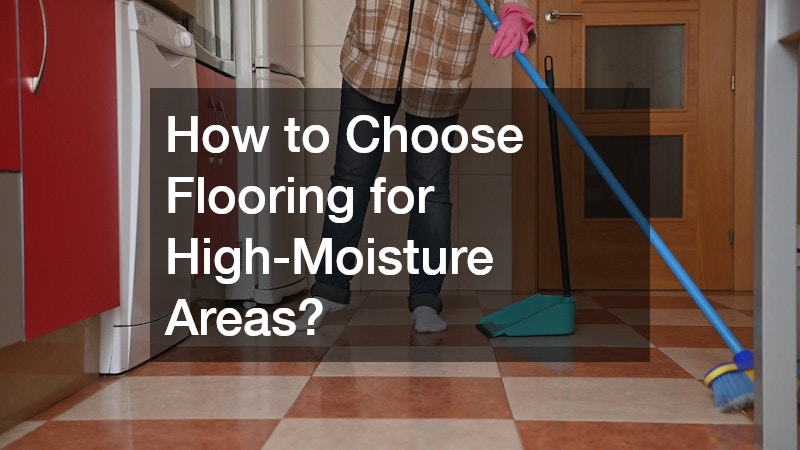Designing a modern summer house is an opportunity to embrace open spaces, natural materials, and serene simplicity. One of the most vital choices in this process is selecting the right flooring. Flooring defines the overall aesthetic, affects comfort and temperature regulation, and influences how easily the home can be maintained—especially during the warmer months when outdoor and indoor living frequently blur together.
With so many available options, it can feel overwhelming to decide which type of flooring best suits your needs. Whether you’re renovating an existing getaway or building a brand-new retreat, it’s crucial to think about climate, durability, color schemes, and lifestyle compatibility. A well-chosen floor can effortlessly transition between the indoor areas and the outdoors, withstand foot traffic, and maintain its appearance over time.
What Are the Best Flooring Options for Summer Houses?

Wood Flooring
Wood floor installation continues to be a go-to for modern summer houses because of its timeless look and warm tones. Light woods like oak or maple pair beautifully with sun-filled interiors and airy layouts. They’re ideal for living rooms, dining areas, and bedrooms where durability meets style.
Vinyl Flooring
Vinyl is a flexible option that comes in a variety of styles, including luxury vinyl planks that mimic real wood or stone. It’s a strong choice for summer homes that experience a lot of sand, dirt, or moisture since it’s easy to clean and doesn’t warp. Many general contractor teams recommend vinyl for areas like kitchens or entryways where practicality is key.
Tile Flooring
Tile is a particularly strong candidate in humid or beachside environments. Porcelain and ceramic tiles hold up well to temperature changes and are simple to maintain. Pairing them with floor graphics can add a touch of personality to utility spaces, mudrooms, or outdoor showers.
How Do I Choose Flooring Based on Climate?
Consider Humidity Levels
Summer houses often reside in high-humidity areas. Wood floor installation in such locations requires careful attention to sealing and acclimatization. Engineered hardwood flooring is often a better alternative than solid hardwood, as it resists expansion and contraction.
Temperature Fluctuations
In climates with fluctuating temperatures, flooring that can adapt without warping or cracking is key. Materials like tile and engineered hardwood flooring provide stability and can handle heat changes without compromising structural integrity.
Seasonal Maintenance
Choose flooring that doesn’t require constant upkeep. For example, vinyl and tile are both low-maintenance choices. And when working with a general contractor, ask about seasonal treatment recommendations to keep your modern summer house looking its best.
What Factors Should I Consider When Selecting Colors?
Natural Light
Most modern summer houses are designed to let in lots of light. Light-colored flooring helps reflect that sunshine, enhancing the brightness of the interior. Pale wood flooring, polished concrete, and light tiles can all make a space feel bigger and more relaxed.
Interior Design Style
Your flooring should complement the broader design of your modern summer house. A minimalist home might look best with neutral tones and smooth textures, while a coastal-themed design could incorporate driftwood tones or floor graphics that mimic beach patterns.
Emotional Impact of Colors
Colors set the tone of a room. Cool grays and soft beiges promote calm and relaxation, while richer browns offer warmth and grounding. Rug stores can help you layer in additional color or pattern if you choose a more neutral base for your flooring.
Are There Eco-Friendly Flooring Options?

Bamboo Flooring
Bamboo grows quickly and regenerates efficiently, making it a popular sustainable option. It performs similarly to hardwood and is great for modern summer houses that aim to minimize environmental impact. In addition to being renewable, bamboo flooring comes in a variety of finishes and plank styles, which makes it adaptable to different interior design themes. It’s also naturally pest-resistant and doesn’t require heavy chemical treatments, further adding to its eco-friendly appeal.
Reclaimed Wood Flooring
Reclaimed wood adds history and texture to a space while reducing the need for new materials. It’s available through a specialized stone supplier or contractor supply stores that focus on sustainable sourcing. Since it’s salvaged from older buildings, barns, or industrial spaces, no new trees are cut down. Many homeowners love the patina and character that comes with age, along with the peace of mind that they’re contributing to a lower carbon footprint. Ensure the wood is properly treated for pests and moisture before installation.
Cork Flooring
Cork is soft underfoot and naturally resistant to mold and mildew. It’s perfect for bedrooms or reading nooks in a modern summer house, offering both sustainability and comfort. Cork is harvested from the bark of cork oak trees, which naturally regenerate after harvesting, making it an excellent renewable resource. Its natural insulating properties help regulate indoor temperatures and sound, ideal for peaceful summer retreats. Plus, it adds a unique, earthy texture to any space.
How Do I Ensure Durability in Summer House Flooring?
Weight and Foot Traffic
Areas like kitchens and hallways see a lot of foot traffic. Choose durable materials such as engineered hardwood flooring, tile, or vinyl. If your home is also used as a rental, prioritize hard-wearing finishes. Consider finishes that resist scuffs and stains to handle shoes, spills, and heavy furniture. In high-use zones, layering with area rugs can offer extra protection and style. Consulting with a general contractor can help you select materials tailored to your lifestyle and the space’s usage level.
Water Resistance
Flooring in a modern summer house should handle wet feet, dripping swimsuits, and sudden rainstorms. Natural stone supplies like slate or limestone offer moisture resistance for entryways and patios. These materials are also easy to clean, withstanding everything from ocean spray to muddy pet paws. If you prefer wood tones indoors, opt for engineered hardwood with a water-resistant core or sealed luxury vinyl that mimics wood grain. Proper subflooring and sealing add another layer of protection against moisture.
Scratch Resistance
If you have pets or kids, scratch resistance becomes a priority. Engineered hardwood flooring with protective finishes or durable tiles can stand up to wear without losing their appeal. For added security, look for surface coatings like aluminum oxide, which boosts durability. Vinyl planks and tiles designed for commercial use are another smart option for families—they offer the same style benefits while holding up under pressure. Protective furniture pads and regular upkeep can help maintain your floors for years.
What Is the Best Flooring for Outdoor Areas?
Composite Decking
Composite decking is a modern alternative to wood that doesn’t splinter or fade as quickly. It’s great for decks, porches, or other outdoor extensions of your modern summer house. It’s made from recycled plastics and wood fibers, making it environmentally friendly and low-maintenance. With built-in UV resistance, composite decking holds its color even under intense summer sun. Its textured surface helps prevent slipping, which is a plus for poolside areas or spaces with frequent foot traffic.
Stone Pavers
Stone pavers sourced from a reputable stone supplier offer durability and a natural look. They pair well with the relaxed luxury vibe of many summer homes, especially when used for patios and pathways. Available in options like travertine, bluestone, and granite, stone pavers hold up well under fluctuating weather conditions. Their varied textures and colors allow for creative layouts that blend into the landscape. Proper installation and sealing ensure long-lasting performance and easy maintenance.
Outdoor Tiles
For a more refined look, outdoor porcelain tiles provide water resistance and sleek aesthetics. If your outdoor area blends into indoor spaces, matching or complementary floor graphics can tie the two together. Outdoor tiles are engineered to withstand temperature shifts and resist cracking. They’re also easy to clean and can be designed with anti-slip finishes for added safety. Choose light tones to reflect heat and keep barefoot traffic cool and comfortable.
How to Choose Flooring for High-Moisture Areas?

Basements and Bathrooms
For below-grade areas, waterproof flooring is essential. Vinyl, tile, and sealed natural stone are all smart options. A contractor supply store can help identify the best sealants and underlayments to use. These floors resist mold and mildew, which is critical in areas with limited airflow or plumbing. Look for flooring with built-in antimicrobial layers or coatings to add an extra layer of protection. A good vapor barrier beneath your flooring can also help reduce long-term issues.
Kitchens and Laundry Rooms
These rooms are prone to spills and splashes. Tile is a common choice, but luxury vinyl and engineered hardwood flooring also work well. Floor graphics in laundry rooms can add fun or visual cues for storage. Choose materials that are easy to mop and resistant to staining. Consider cork-backed vinyl for added softness underfoot. Using area rugs in sink or appliance zones can help catch drips and prevent wear on the underlying floor.
Waterproof Flooring Options
Look for products labeled specifically as waterproof or water-resistant. General contractors can recommend brands known for their moisture tolerance—especially helpful if your modern summer house is by the beach or a lake. WPC (wood plastic composite) and SPC (stone plastic composite) vinyl flooring are popular for their tough, watertight cores. Sealed stone or porcelain tile also holds up well under damp conditions. Good installation practices, like tight seams and proper edging, further reduce the risk of water damage.
How Does Flooring Affect Home Value?
Impact on Appraisal Value
Well-chosen flooring can increase the resale value of your modern summer house. Materials like hardwood and natural stone are particularly attractive to buyers, offering both aesthetic and practical benefits. These materials are perceived as premium and timeless, which boosts overall market appeal. Updating flooring before selling is often one of the most cost-effective renovations in terms of ROI. Appraisers also look favorably on cohesive, well-maintained flooring across living spaces.
Buyer Preferences
Today’s buyers lean toward low-maintenance, high-durability flooring. Engineered hardwood flooring and vinyl options meet these needs without sacrificing style. Consulting a general contractor or rug store can help you tap into regional preferences. Modern homebuyers value functionality as much as looks, so flooring that handles daily wear gracefully stands out. Eco-conscious options like bamboo and cork may also resonate with green-minded shoppers, especially in vacation markets.
Long-Term Investment
Durable, classic flooring is a smart long-term investment. It reduces the need for early replacement and helps your home stand out in a competitive market. Flooring that performs well in all seasons, especially in humid or high-traffic environments, protects the underlying structure of your home. Additionally, consistent flooring across shared spaces creates visual flow, which adds to perceived square footage and comfort—two things every buyer loves.
What Are the Maintenance Requirements for Different Floors?
Daily Cleaning
Sweeping or vacuuming wood and vinyl flooring regularly helps prevent damage from sand and grit. Using rugs from a local rug store can protect high-traffic zones while adding warmth and texture. Consider microfiber mops or vacuum attachments designed for your specific floor type to avoid scratching. Regular dusting reduces allergens and keeps your space feeling fresh, especially important for those with sensitivities. Even low-maintenance floors need consistent care to look their best.
Periodic Maintenance
Some floors, like tile and natural stone, benefit from resealing every few years. Wood floor installation may require occasional refinishing depending on wear. A good gutter cleaning service can also help prevent water from reaching interior flooring through leaks. Waxing or buffing certain vinyl and wood products can refresh their appearance. Check manufacturer recommendations for exact intervals and products to use. Regular inspections help catch problems early before they require major repairs.
Lifespan Considerations
Vinyl and tile floors can last decades with proper care. Wood floors may need refinishing but often hold up beautifully over time. Durable materials mean your modern summer house will retain its charm and function for years. Choosing flooring with a solid warranty provides peace of mind and may offer guidance on maintenance routines. Climate and usage level both impact longevity, so tailor your care to your home’s specific conditions.
How Do I Install Flooring in a Summer House?

DIY Installation vs. Hiring Professionals
While DIY can save money, hiring a general contractor or masonry contractor ensures better results. Complex materials like stone or engineered hardwood flooring require experience for best outcomes. Mistakes during installation can lead to costly repairs or reduced durability. Contractors bring not only the right tools, but also the know-how to address subfloor issues or tricky layouts. If your summer house is a rental, professional work can also boost safety and renter satisfaction.
Tools and Materials Needed
You’ll need tools like spacers, levels, saws, and adhesive depending on the flooring type. Visit a contractor supply store to get everything required for a safe and efficient installation. Don’t forget essentials like moisture barriers, underlayment, or grout if needed. Renting larger tools like floor rollers or tile cutters can save money and effort. Make a checklist ahead of time to avoid mid-project trips to the store.
Step-by-Step Installation Process
Each type of flooring has its own installation process. Wood floor installation typically starts with subfloor prep and acclimation. Vinyl may come with peel-and-stick backing, while tile demands careful spacing and grouting. Your local masonry contractor or general contractor can walk you through these steps or handle them entirely.
Conclusion
Choosing the right flooring for your modern summer house is about more than just looks—it’s a decision that impacts comfort, longevity, and value. Whether you lean toward the rich tones of engineered hardwood flooring, the practicality of vinyl, or the natural elegance of stone, your choice should reflect your lifestyle and the environment around you.



